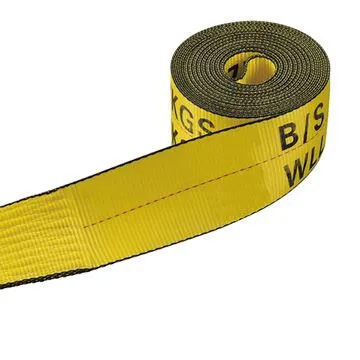- Afrikaans
- Albanian
- Amharic
- Arabic
- Armenian
- Azerbaijani
- Basque
- Belarusian
- Bengali
- Bosnian
- Bulgarian
- Catalan
- Cebuano
- Corsican
- Croatian
- Czech
- Danish
- Dutch
- English
- Esperanto
- Estonian
- French
- German
- Greek
- Hindi
- Indonesian
- irish
- Italian
- Japanese
- Korean
- Lao
- Malay
- Myanmar
- Norwegian
- Norwegian
- Polish
- Portuguese
- Romanian
- Russian
- Serbian
- Spanish
- Swedish
- Thai
- Turkish
- Ukrainian
- Uzbek
- Vietnamese
Nov . 21, 2024 16:27 Back to list
suspended ceiling main tee
Understanding Suspended Ceiling Main Tee An Essential Element in Modern Interior Design
Suspended ceilings, also known as drop ceilings or false ceilings, have become a fundamental aspect of modern interior design, particularly in commercial settings. At the heart of suspended ceilings lies the main tee, a critical component that supports the entire system. This article delves into the concept of suspended ceiling main tees, their functions, installation processes, and benefits.
What is a Suspended Ceiling?
A suspended ceiling refers to a secondary ceiling that is hung below the main structural ceiling. This design not only enhances the aesthetic appeal of a space but also serves functional purposes. It allows for the concealment of wiring, plumbing, and HVAC ducts, providing a clean and uncluttered overhead view. Additionally, suspended ceilings are instrumental in sound insulation and improving acoustics, making them particularly beneficial in offices, schools, and auditoriums.
The Role of Main Tee
The main tee is a crucial structural component in the suspended ceiling grid system. It is typically a metal channel that runs perpendicular to the support walls, forming the backbone of the ceiling grid. The main tees are connected to the building's structure through suspension wires, ensuring stability and robustness.
The primary role of the main tee is to support the tiles or panels that make up the ceiling. These tees provide a framework that holds the ceiling tiles securely in place, ensuring that they stay level and can withstand various environmental conditions. The spacing of main tees usually ranges from 24 inches apart, allowing for easy installation and removal of ceiling tiles when necessary.
Installation of Main Tees
The installation of main tees is a precise process that requires careful planning and execution. Initially, the desired height of the ceiling is determined, and a chalk line is snapped along the perimeter of the room to guide the installation. The main tees are then suspended at specified intervals, typically using T-bar hangers or wires attached to the overhead structure.
suspended ceiling main tee

Once the main tees are in place, cross tees are installed to form a grid system. These cross tees connect with the main tees to create a solid framework for the ceiling tiles. Once the grid system is fully established, the ceiling tiles can be laid into the grid, completing the suspended ceiling installation.
Benefits of Using Suspended Ceiling Main Tees
1. Versatility Suspended ceiling main tees can accommodate a variety of ceiling tile designs and materials, allowing for a customizable aesthetic. This versatility makes them suitable for various applications, from offices to recreational spaces.
2. Ease of Maintenance The design of suspended ceilings, facilitated by main tees, allows for easy access to plumbing, electrical wiring, and HVAC systems. If service or maintenance is required, tiles can be removed quickly without disrupting the entire ceiling structure.
3. Acoustic Performance Many ceiling tiles designed for use with main tees are specifically engineered for sound absorption. This is particularly advantageous in environments where noise control is paramount, such as in classrooms or conference rooms.
4. Energy Efficiency Suspended ceilings can contribute to energy efficiency by improving the insulation of a space. With the right materials, they can help to reduce energy costs by maintaining stable temperatures and minimizing heat loss.
5. Aesthetic Appeal A well-installed suspended ceiling with neatly aligned main tees creates a visually appealing finish. It offers a modern look that can enhance the overall design of a space.
Conclusion
Suspended ceiling main tees are more than just a support structure; they are a vital element that influences the functionality and aesthetics of a room. By providing a stable framework for ceiling tiles, main tees allow for versatile designs, ease of maintenance, and improved acoustic performance. As interior spaces continue to evolve, the importance of suspended ceilings—anchored by robust main tees—remains a fundamental feature in effective room design. This makes understanding and implementing these elements essential for architects, designers, and builders striving for the best possible results in their projects.
-
Transform Interiors with PVC Gypsum Ceiling: A Stylish, Durable, and Moisture-Resistant SolutionNewsMay.19,2025
-
The Smart Interior Upgrade: Discover the Durability and Versatility of Gypsum Ceiling Access Panel SolutionsNewsMay.19,2025
-
The Smart Choice for Interior Design: Discover the Value of PVC Gypsum Ceiling SolutionsNewsMay.19,2025
-
Mineral Fiber Ceiling Tiles: The Smart Blend of Performance and AestheticsNewsMay.19,2025
-
Mineral Fiber Ceiling Tiles: The Superior Choice Over Gypsum for Sound and Fire SafetyNewsMay.19,2025
-
Mineral Fiber Ceiling Tiles: Eco-Friendly Strength and Style for Every CeilingNewsMay.19,2025







